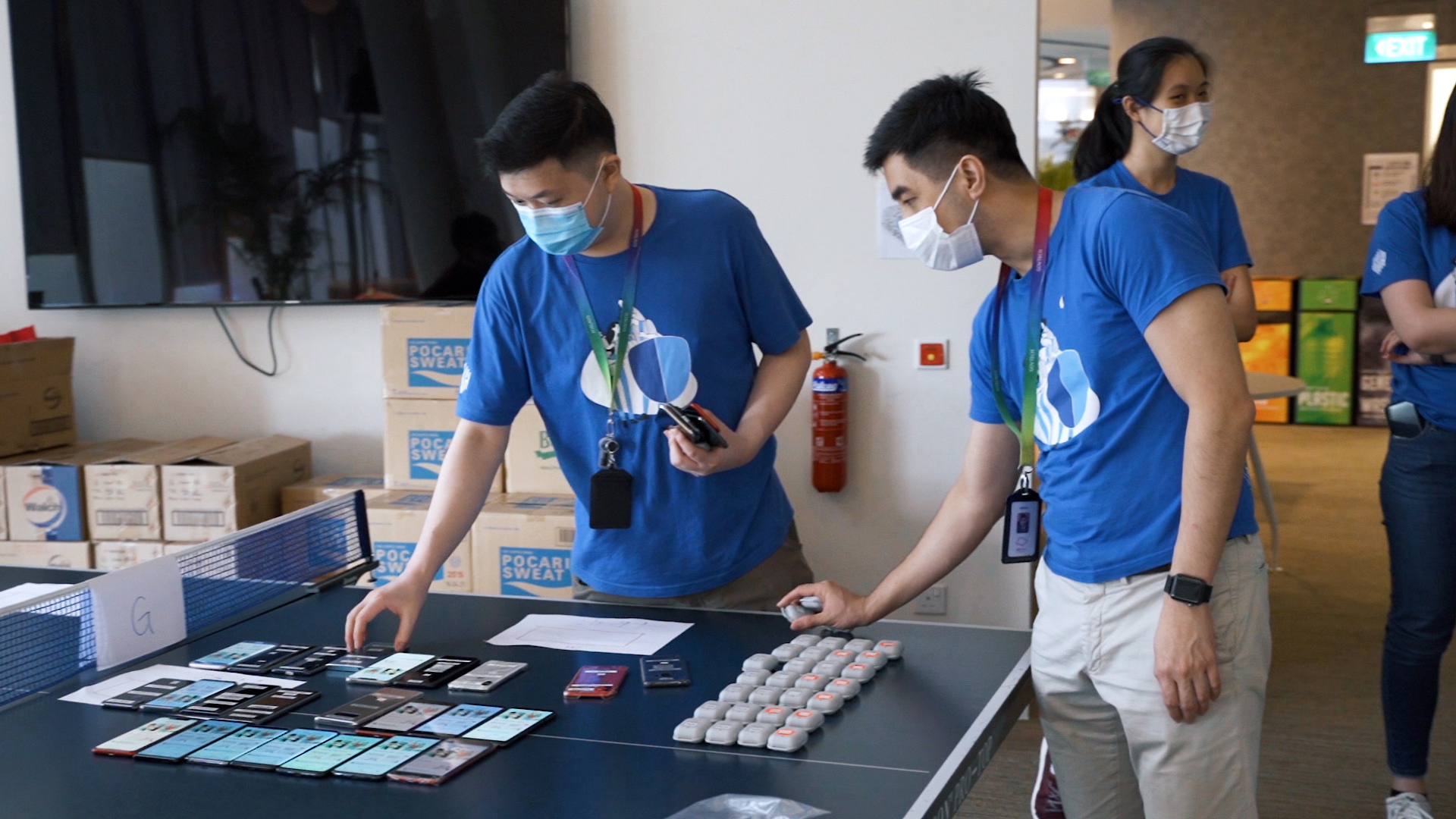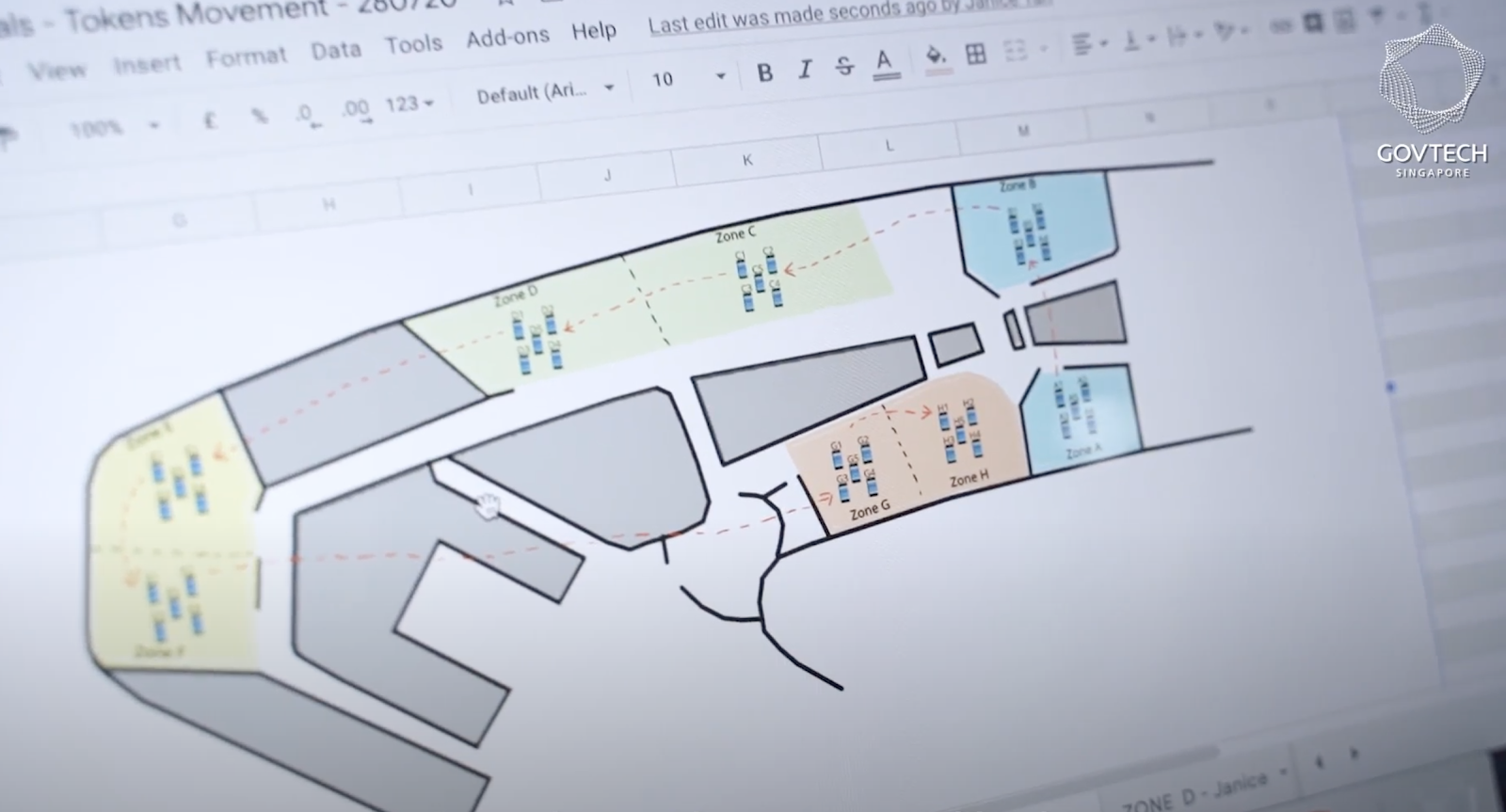Before you #TraceTogether, the team first #TestsTogether

The TraceTogether App was launched in March by the Ministry of Health (MOH) and GovTech, as part of the world’s first national digital contact tracing effort.
Since then, it has been used extensively by the MOH and the product team has been busy improving its effectiveness and building enhancements, without compromising on security. We took a look behind the scenes to learn more about the testing process:
The first thing we realised? They use a lot of phones. Like a lot.
How many smartphone models can you name? Our guess is not a lot, especially beyond the flagship models of Apple, Samsung, Huawei, and Google, am i right?
In reality though, the phone population in Singapore isn’t just made up of more prominent models (the iPhones, the Galaxies, the Pixels), but also less glamorous models – say, like the humble Oppo A5.
Why does this matter? Because for TraceTogether to work effectively, the team has to make sure that ALL devices can be detected by each other – not just the popular ones. To help with this, the team maintains a ‘device farm’ – a collection of over 100 different devices representing the majority of the devices used in Singapore by market share.
The new TraceTogether tokens also go through the same stringent testing
In case you’re wondering whether or not there will be compatibility issues between smartphones and the newly introduced Tokens, the team has also been working hard to ensure that this communication is smooth.
TraceTogether Tokens, also based on BlueTooth proximity tracing, are tested alongside the App to ensure interoperability. This is done by calibrating distances to account for close contact range.
As the team conducts more trials and in turn collects more data, they are able to make more refined estimates that help improve the accuracy of digital contact tracing when used by MOH.
Indeed, in the eyes of Team TraceTogether, there’s no Apple vs Android, Token vs App – all devices are the same.
(Sorry fanboys.)
The GovTech office doubles as a makeshift testing ground
When the team needs a conducive environment to simulate real world conditions, it’s fortunate that they have the GovTech office at Sandcrawler! This space has a wide variety of different office layouts, and is divided into different zones, each simulating different types of areas that TraceTogether needs to operate in.

For example, one zone with wide open spaces can simulate, say, a void deck or a mall’s atrium, while a more intimate space can simulate tight spaces, such as public transport.
Both phones and tokens are then placed randomly in each zone. The goal here is simple:
1) Devices in the same zone must be able to detect and classify other devices in close proximity via TraceTogether
2) TraceTogether should not deem other devices in different zones as being in close proximity.
This process is repeated again and again, with varying combinations of phones and tokens in each zone, until the team is satisfied. Intense!
The testing never stops:
“One of the mistaken impressions that people have is that TraceTogether is a static programme. It’s not. It was developed in a very compressed period of time. And we’ve been working hard with MOH contact tracers to support their workflow and processes, while also constantly making the app more convenient for citizens.” Explained Jason Bay, Senior Director, Government Digital Services.
“We also urge users to continue using SafeEntry and TraceTogether, which are complementary products – and not substitutes. One focuses on the locations you have been to, and helps jog your memory if you are asked to help in contact tracing; the other looks at person-to-person interactions.”
So to keep safe, remember to update your app to the latest version, and keep it open in the background whenever you head out!
https://www.tech.gov.sg/media/technews/20201015-before-tracetogether-you-have-to-testtogether
